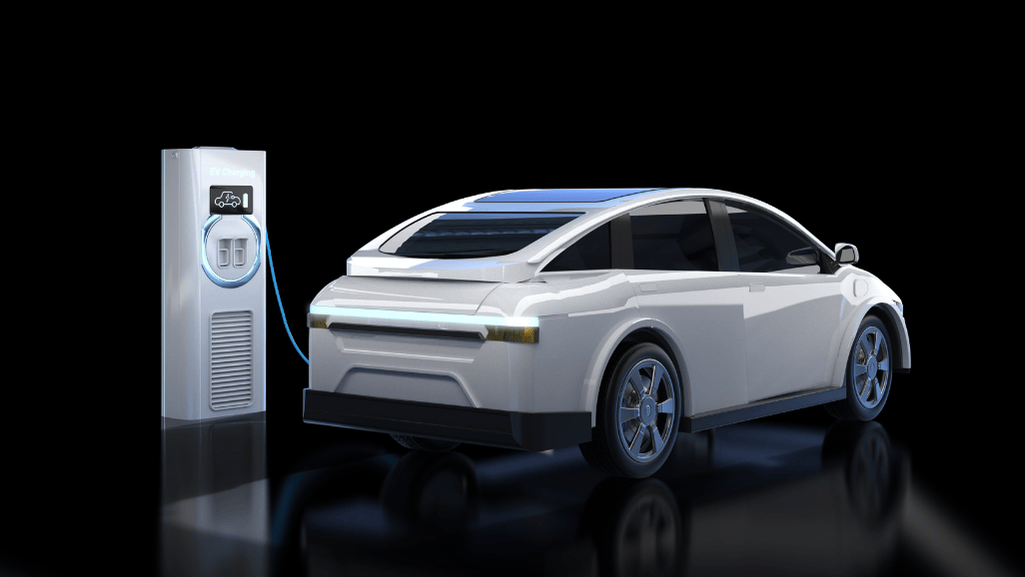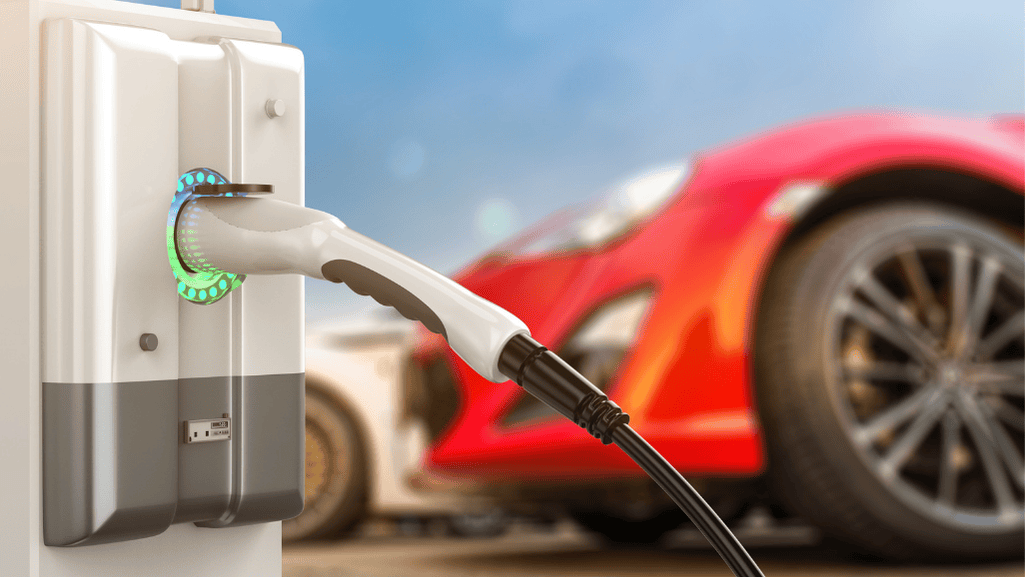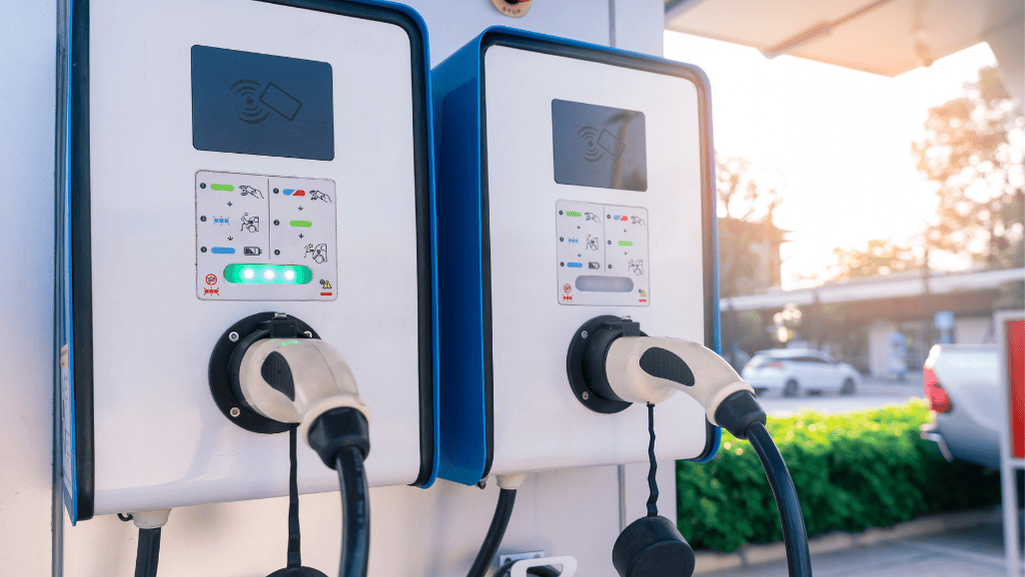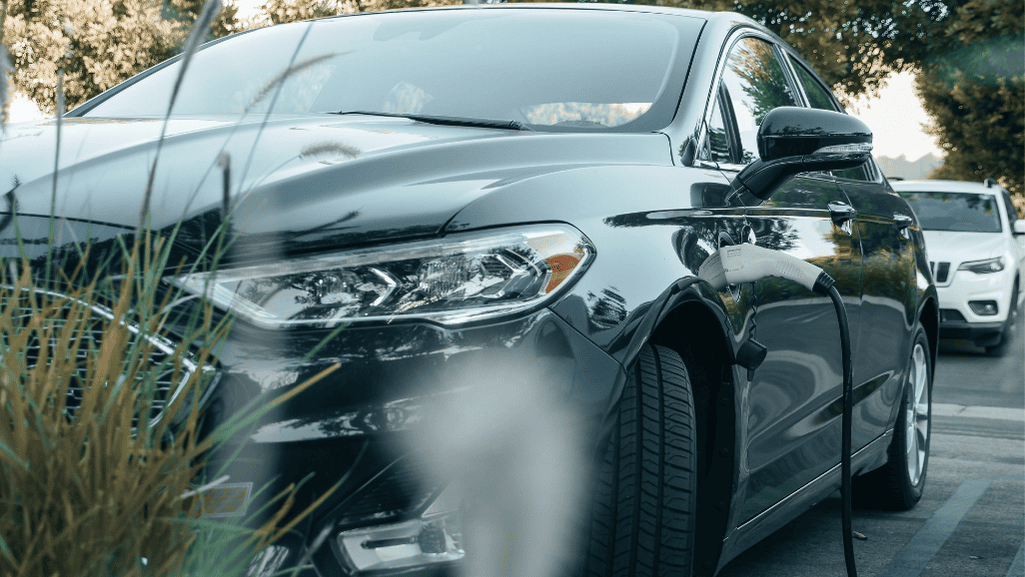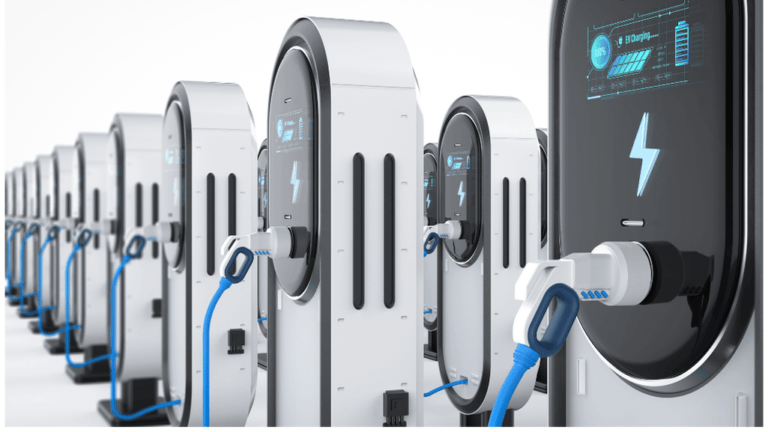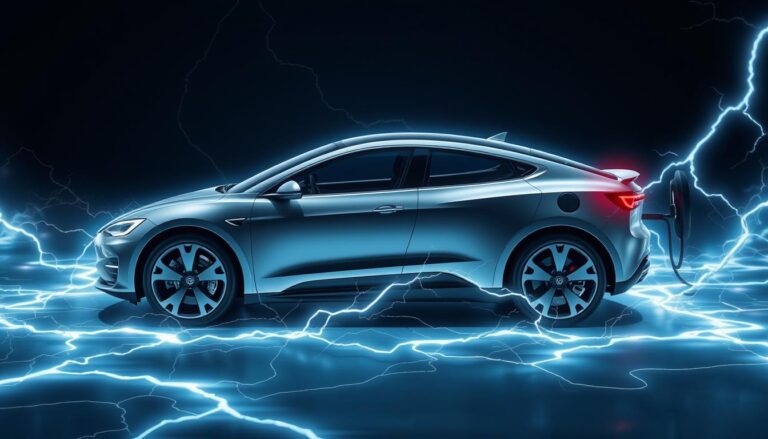Electric vehicles (EVs) are becoming more popular, making electric car fast charging key for drivers who want quick energy boosts. Fast charging is great for quick energy refills, but it’s important to know how to charge your EV well to keep the battery healthy. A high-speed electric car charger can greatly improve convenience and help keep your battery in good shape.
Electric car batteries do best with balanced charging. Using Level 3 DC EV quick charging stations wisely is important. These chargers can give an 80% charge in just 30 minutes. But, it’s important to charge your car carefully to avoid harming the battery over time.
The growth of public EV charging spots is crucial for EV owners. We’re seeing more places to charge your car, which helps reduce “charging anxiety.” By 2030, there will be over 500,000 EV chargers. For more tips on EV quick charging, check out the detailed charging tips at Green Cars.
Key Takeaways
- Strategically utilize fast charging to maintain your EV’s battery health.
- Opt for a high-speed electric car charger that can reach 80% in about 30 minutes for efficiency.
- Awareness of EV charging specifics and the impact on battery life is crucial.
- Moderation is key; reserve rapid charging stations for long trips and emergencies.
- Stay apprised of the latest EV charger updates and guidelines from manufacturers for optimal charging practices.
- Consider the role of environmental conditions and Battery Management Systems in preserving the battery’s long-term health.
Understanding the Basics of Electric Car Fast Charging
Electric vehicle (EV) technology is moving fast, changing how we power our cars. Fast charging stations and electric vehicle rapid chargers are key to this change. They make charging cars quick and efficient, making electric cars great for any trip.
What is Fast Charging and How It Works
Rapid EV charging systems, also known as DC fast charging, charge EVs much faster than old AC systems. While Level 2 chargers take hours, DC fast chargers can charge a car in 15 to 45 minutes. They send power straight to the battery at high speeds, using 50 kW to 350 kW.
The EVgo network has over 1,000 fast charging stations across the country. These stations have different power levels for various cars, making sure everyone gets a quick charge.
The Importance of Fast Charging Stations in EV Adoption
Fast charging stations are key to more people using electric vehicles. They cut down the time it takes to recharge, making EVs more appealing. With more stations popping up, people are getting more confident in EVs.
Using rapid EV charging stations also saves money. It’s about 35% cheaper than filling up a gas car. Plus, these stations help keep batteries healthy by charging them safely.
The future of driving is electric, and knowing about electric vehicle rapid chargers and fast charging technology is crucial. By investing in these networks, we’re paving the way for cleaner, more efficient driving.
Battery Longevity and Fast Charging
The link between EV quick charging and battery longevity is key for keeping electric vehicles running well. Fast charging is a must for EV users who need quick power. But, it can also affect how long the battery lasts.
Impact of Fast Charging on Battery Health
Efficient EV battery refills make driving easier and improve how well the car runs. But, not all fast charging is the same. A standard fast charger (22kW) can fill a 60kWh battery in about three hours. But, rapid 150kW chargers do it in less than 30 minutes.
Even though they’re fast, using high-capacity DC rapid chargers a lot can make the battery degrade faster by about 16%. Keeping the battery’s charge between 20% and 80% helps keep it healthy.
Strategies for Minimizing Battery Degradation
To make the most of EV quick charging and protect the battery, we need smart strategies. Using AC fast charging often and saving DC rapid charging for emergencies can help. Batteries last longer if they’re kept away from extreme temperatures and charged right.
Advanced tips include charging during off-peak hours and following the car maker’s advice. This helps keep the battery in top shape.
The following table shows how different charging methods affect battery life:
| Charging Type | Average Charge Time | Impact on Battery Degradation | Usage Recommendation |
|---|---|---|---|
| 22kW AC Fast Charger | ~3 hours | Minimal Impact | Recommended for daily use |
| 150kW DC Rapid Charger | ~30 minutes | Increased Degradation (16% more) | Use sparingly for emergencies |
| Level 2 Charging (overnight) | Varies | 24.5% capacity loss after 50,000 miles | Optimal for routine overnight refills |
| Level 3 DC Charging | Varies | 27% capacity loss after 50,000 miles | Minimal use recommended |
Getting the most out of efficient EV battery refills means finding a balance between speed and care. By charging smartly, drivers can keep their batteries healthy. This cuts down on maintenance costs and helps the environment too.
Optimizing Fast Charging with Temperature Control
Knowing how temperature affects optimized EV charging is key to making electric vehicles work better. A big step to make quick electric car battery refill faster is through battery preconditioning. This means setting the battery’s temperature right before you start charging.
Research shows that electric vehicle batteries charge best when they’re between 20% and 80% full. The battery management system (BMS) helps by controlling the temperature. This keeps charging efficient, even when it’s very cold. If it’s below 40 degrees Fahrenheit, charging slows down a lot, making it take longer to refill the battery.
| Condition | Impact on EV Charging | Impact on Gas Vehicles |
|---|---|---|
| Low Temperature (32°F) | 36% less energy intake for charging | Reduction in fuel economy by 15-24% |
| Cold Overnight (20% Decrease) | Reduced driving range by up to 20% | N/A |
| Indoor Parking | Enhanced speed and charge retention | N/A |
Using battery preconditioning helps with optimized EV charging. It warms or cools the battery to the best temperature for charging. This means the battery charges faster and uses energy more efficiently. Starting to charge with the battery at the right temperature also helps it handle cold weather better. This makes charging faster and improves how well the car works.
Turning off things you don’t need in an EV while it’s charging helps too. It makes sure more energy goes into charging the battery. This means faster refills and longer drives.
Charging Habits: Maximizing Battery Performance
To make electric vehicles (EVs) work better and last longer, it’s key to charge them right. Knowing how charging affects the battery helps owners make better choices. This leads to better charging and a longer-lasting battery.
Charging your battery to 80-90% often can ease the stress on it. This helps make the battery last longer. Using smart chargers that stop charging at a set level makes this easy.
- Using Level 1 or Level 2 charging for daily needs helps avoid quick battery wear. This is important because fast charging can wear out the battery by 3-5% over 50,000 miles.
- Apps that track your charging habits and offer tips can help charge your car efficiently. They also keep the battery in good shape.
Keeping your EV cool while charging is also key. Charge it in a cool place and wait a bit before charging after driving. This stops the battery from getting too hot and wearing out faster.
| Charging Type | Time to Charge to 80% | Average Range Added Per Hour | Impact on Battery Health |
|---|---|---|---|
| Level 1 (Slow charging) | 20 hours | 2-5 miles | Minimal |
| Level 2 (Home/Work charging) | 4-6 hours | 12-80 miles | Low |
| Level 3 (DC Fast charging) | 20 minutes | Varies | High (3-5% degradation over 50k miles) |
Slower charging options like Level 1 and Level 2 are better for your battery. They help avoid quick wear and are good for daily use. Level 2 chargers, for example, charge faster than Level 1 but are gentler than Level 3. This makes them a good choice for balancing speed and battery life.
Following these best charging practices makes electric vehicles work better and last longer. It ensures they stay reliable as electric cars become more common.
The Role of Driving Habits in Fast Charging Efficiency
Improving fast charging for electric vehicles is not just about better infrastructure and energy. It’s also about how we drive and save energy every day. Knowing how to drive well and plan your route can make charging faster and more efficient. This is key for both new and experienced electric vehicle owners.
Energy Conservation through Driving Techniques
Driving efficiently is crucial for electric vehicles to perform well and last longer. Techniques like gentle acceleration, keeping speeds in check, and using regenerative braking save energy. They also mean you charge less often. For example, driving fast can cut down an electric vehicle’s range, showing why smooth driving is better.
Things like weather, terrain, and what you’re carrying in your car affect how much energy an electric car uses. Cold weather can cut battery performance by up to 50%, and hills use more energy, reducing your range. Smart driving in these conditions helps with EV charging optimization.
Pre-planning Routes for Optimal Charging
Planning your route ahead is key to better charging efficiency. Choosing routes with fast charging stations helps reduce energy use per trip. Adding stops for Level 2 charging, which is becoming common at workplaces, keeps your battery in good shape all day.
Avoiding tough terrains like steep hills is also smart. They use more energy, making charging less efficient. For example, Mass Audubon is adding EV charging stations at wildlife sanctuaries. This lets drivers enjoy nature while keeping their energy use low.
Choosing routes with fewer tough roads and regular charging spots can greatly improve your electric vehicle’s range and efficiency. This makes your trips greener and cheaper.
In summary, better driving habits and smart route planning can boost your electric vehicle’s charging efficiency. This approach saves energy, extends the battery’s life, and is good for the environment and your wallet.
Accessorizing for Efficient EV Charging
Optimizing electric vehicle (EV) charging is more than just plugging in and waiting. It’s about picking the right electric car accessories and EV charging enhancements. Having fast charging efficiency tools can cut down on waiting time and increase your EV’s range.
When picking accessories like Type 1 EV charging cables, think about your car, driving habits, and how often you charge. High-quality cables and adaptors are key for safety and keeping charging efficient. Since most EVs in America use J1772 standards, make sure your accessories match this.
Modern charging stations come with smart features like Wi-Fi connectivity. This lets you monitor and manage your charging from anywhere. These smart features make charging more controlled and fit your lifestyle better.
Adaptors are also key for EV owners. They let you charge your car at different stations, even if they don’t fit your car’s connector. This means you can charge your EV more places, making life easier.
Improving your EV’s charging isn’t just about adapters and smart tech. Cable management tools like cable guards or longer extension cables add convenience and protect your gear. For those with limited plug access, socket splitters are a must, ensuring safe and reliable power.
Using the right electric car accessories and EV charging enhancements can make charging better, safer, and more efficient. Look into these accessories to improve your charging and boost your EV’s performance.
Future Technologies in Electric Car Fast Charging
The world of electric vehicles is always changing, with advanced fast charging technologies leading the way. Solid-state batteries and efforts to increase EV battery capacity are changing how we charge our cars.
Solid-State Batteries and their Impact on Charging Times
Solid-state batteries are a big step forward in electric car tech. They use solid electrolytes instead of liquid, making them safer and more efficient. This could cut down charging time to just five minutes, like filling up a gas tank.
Solid-state batteries also last longer and work better in different weather. This makes them a key part of the future of electric cars.
With solid-state batteries, fast charging will get even better. This means more efficient charging and more cars on the road.
Advancements in Charging Speeds and Battery Capacity
New ultra-fast charging stations are being developed to match the speed of solid-state batteries. These stations can charge an EV to 80% in about 15 minutes. This is great for long trips and heavy use.
Smart charging systems are also key to making charging better. They look at things like electricity prices and how much power is needed. This makes charging more efficient and helps the power grid by using V2G and solar power.
In the end, the future of electric cars looks bright with solid-state batteries, bigger batteries, and advanced fast charging technologies. This will help the planet and make driving easier, starting a new chapter in car tech.
Comparative Analysis: EV Quick Charging vs. Traditional Fueling
The debate between EV versus gasoline charging efficiencies and quick electric vehicle refill vs. fueling is key in today’s car world. It shows us the big picture on costs and the environment.
Gasoline prices hit over $5 a gallon in June 2022. Electric vehicles (EVs) offered a cheaper option. Charging an EV costs about $66.66 a month, much less than the $182.50 for gasoline cars. This shows EVs have a big advantage in EV versus gasoline charging efficiencies.
| Charging/Fueling Type | Average Monthly Cost | Average Yearly Cost |
|---|---|---|
| Electric Vehicle | $66.66 | $799.92 |
| Gasoline Vehicle | $182.50 | $2,190 |
About 43% of US adults are hesitant to adopt EVs, with 21% worried about charging costs. But, these worries might fade as EV charging spots grow. For example, DC fast charging stations can give an EV 100 to 200+ miles in just 30 minutes, making long trips easier.
- Home Charging Convenience: Charging an EV at home is cheap during off-peak hours. It’s a big saving and more convenient than filling up a gas tank.
- Public Charging Options: Public charging spots have different prices but are usually faster than charging at home.
For more info on EV tech and charging, check out EV Next Gen. Experts like Forhad share deep insights into electric vehicles.
In conclusion, the quick electric vehicle refill vs. fueling debate covers many angles. The move to electric cars looks promising for saving money and reducing harm to the environment. This shift is key to making the car industry more sustainable.
Home Charging vs. Public Charging Stations
Choosing how to charge your electric vehicle (EV) is a big decision. You can pick between charging at home or using public stations. This choice affects your wallet and daily life. We’ll look at the good points of each option to help you decide.
Understanding the Benefits of Home Charging Setups
About 80% of EV charging happens at home. This method is cheaper and more convenient. Home rates for electricity vary, from $0.11 per kilowatt-hour in Washington to $0.41 in Hawaii. This means charging your EV at home can save you a lot of money over time.
Adding a Level 2 charger at home can cost less than $1,000. This is a small price to pay for saving money on charging. It’s a smart choice for long-term savings.
Utilizing Public Fast Charging Infrastructure
Public charging stations are key for EV drivers on the go or without home chargers. But, they’re pricier than home charging. Level 2 public charging can cost $770 to $963 a year. Fast DC charging can be even more, at $1,540 to $2,300 annually.
This section offers tips on how to use public stations wisely. Try to charge at cheaper stations or those with loyalty rewards. This can help cut costs and make charging more efficient.
| Charging Type | Cost at Home per kWh | Public Charging Cost per kWh | Annual Cost (Average Use) |
|---|---|---|---|
| Level 2 | $0.12 – $0.41 | $1 – $5 per hour | $770 – $963 |
| Fast DC | N/A | $10 – $30 per full charge | $1,540 – $2,300 |
In conclusion, choosing between home or public charging depends on your driving habits, where you live, and your budget. This guide aims to give you all the info you need to make the best choice for you.
Conclusion
Fast charging technology is key to getting the most out of electric cars. By understanding DC chargers, car owners can quickly top off their EV’s battery. This means less time waiting and more time on the road.
But, it’s important to remember that not all chargers are the same. Level 1 and Level 2 chargers take longer but are great for everyday use. Each charger type has its own role in EV charging.
Now, with chargers that can fill up an EV in about 20 to 30 minutes, the future looks exciting. But, we must use these chargers wisely to protect the battery. Newer EVs have systems to manage heat during fast charging, making things safer and more efficient.
Service centers need to keep up with EV maintenance needs too. They must be ready to handle the demands of fast charging.
As we move towards cleaner transportation, our choices today shape the future. Choosing the right charging times, avoiding extreme temperatures, and using solar power can make EVs even better. With new tech on the horizon, electric vehicles are set to become the smart and convenient choice for everyone.


